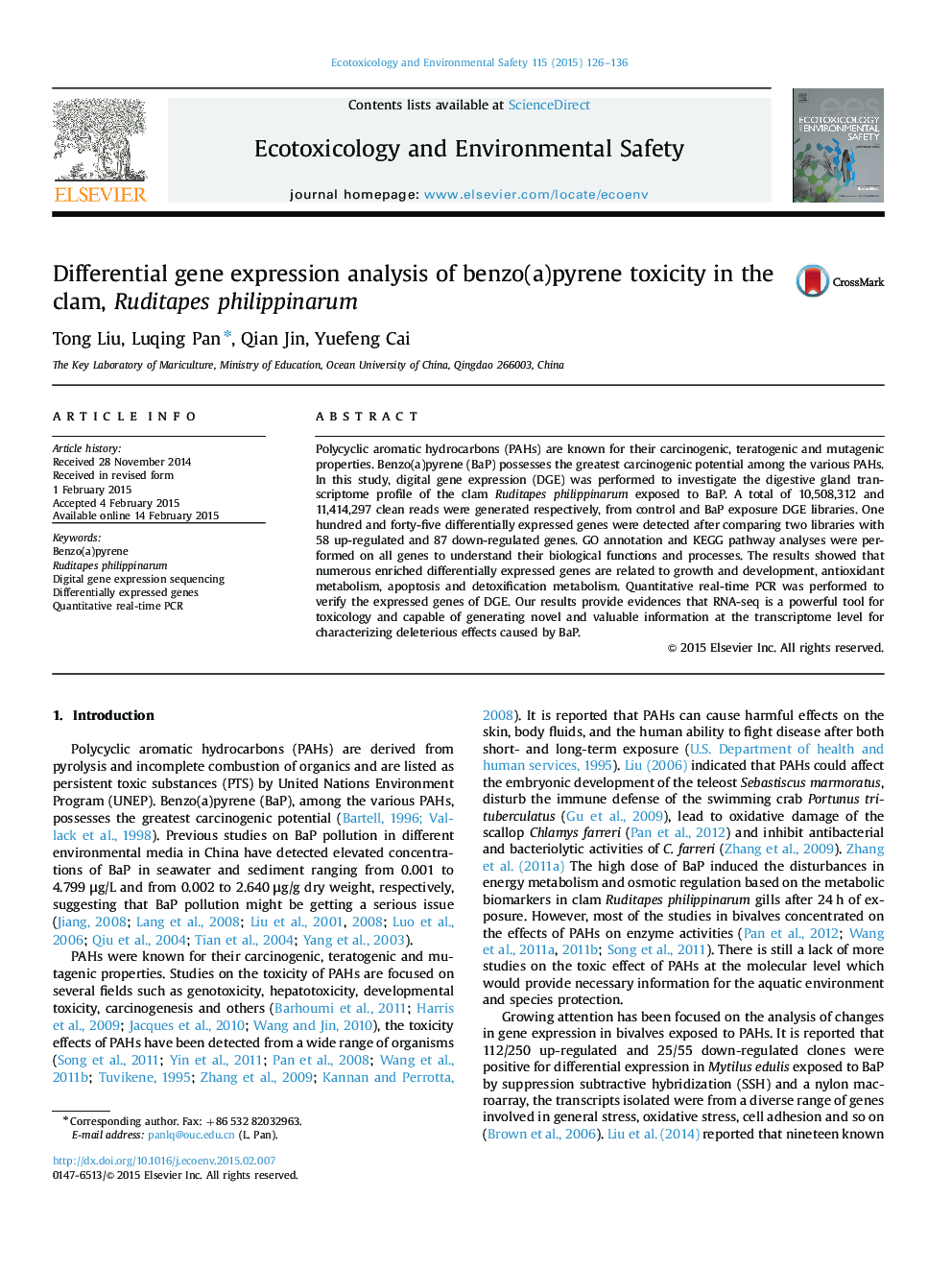| Article ID | Journal | Published Year | Pages | File Type |
|---|---|---|---|---|
| 4419734 | Ecotoxicology and Environmental Safety | 2015 | 11 Pages |
•We studied the overall transcription responses of clam digestive gland under benzo(a)pyrene stress.•Digital gene expression sequencing technology was used to study the toxicity effects of benzo(a)pyrene.•The study revealed the molecular mechanisms of benzo(a)pyrene in clam.•The data gives information for screening molecular biomarkers of polycyclic aromatic hydrocarbons pollution.
Polycyclic aromatic hydrocarbons (PAHs) are known for their carcinogenic, teratogenic and mutagenic properties. Benzo(a)pyrene (BaP) possesses the greatest carcinogenic potential among the various PAHs. In this study, digital gene expression (DGE) was performed to investigate the digestive gland transcriptome profile of the clam Ruditapes philippinarum exposed to BaP. A total of 10,508,312 and 11,414,297 clean reads were generated respectively, from control and BaP exposure DGE libraries. One hundred and forty-five differentially expressed genes were detected after comparing two libraries with 58 up-regulated and 87 down-regulated genes. GO annotation and KEGG pathway analyses were performed on all genes to understand their biological functions and processes. The results showed that numerous enriched differentially expressed genes are related to growth and development, antioxidant metabolism, apoptosis and detoxification metabolism. Quantitative real-time PCR was performed to verify the expressed genes of DGE. Our results provide evidences that RNA-seq is a powerful tool for toxicology and capable of generating novel and valuable information at the transcriptome level for characterizing deleterious effects caused by BaP.
